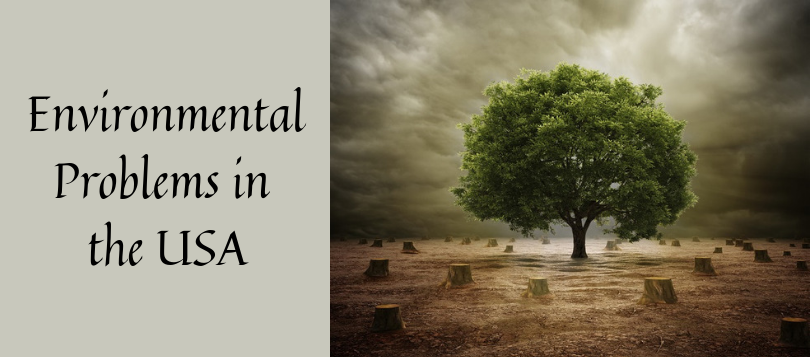The problem of the environment is extremely acute in North America. Every year the living conditions of the population in cities, especially industrial centers, worsen, actively exploited natural resources are used – surface water, soil, etc. This process is accompanied by the destruction of the natural landscape and the repression of its “artificial environment”, not always suitable for human life. Human exposure affects the most important components of the natural environment – the atmosphere, hydrosphere, soil. Since they are all interconnected, the destruction or pollution of natural components becomes widespread.
In the late 60s, the beginning of the 70s, the 20th. in North America, the mass of waste was 5-6 billion tons per year. At least 20% of this material is chemically active, i.e. has the ability to react with the chemical elements of the natural environment. We speak about oxides of sulfur, nitrogen, carbon, which enter the atmosphere when burning mineral fuels, as well as mineral fertilizers, pesticides, and household chemicals.
The most difficult situation occurs in the United States on the coast of California, along which the cold stream runs. In the fumes condensing over the coastal waters, the exhaust gases of many thousands of cars fill the streets of Los Angeles and suburban highways. Anticyclonic weather, constant in the summer half of the year, increases the influx of solar radiation, which in turn contributes to complex chemical transformations into the atmosphere. The result is a thick fog saturated with poisonous vapors, which has a detrimental effect on the rich subtropical vegetation of the coast and contributes to the spread of various diseases among people.
Another important environmental issue is the depletion of water resources. Water consumption in North America is constantly growing and by 2000 it is projected to reach 1,112 cubic meters. km per year, while you can use only 750-800 cu. km water. This means that water must be used repeatedly. In many parts of the country, it has long been a necessity.
A well-known American expert A. Walman, in the mid-60s, wrote that more than 100 million people in the United States consume water that was used at least once and passed through the sewers. Such a scale of water consumption requires compliance with 2 conditions:
- constant maintenance of the initial volume of water in rivers;
- restoration of its quality.
Fulfillment of these conditions is a difficult, almost impossible task for the USA.
An equally difficult problem is water pollution in water bodies. Among the various forms of water pollution – biological, chemical, thermal – the latter has acquired the widest dimensions in North America. 600 cu. km of water withdrawn annually from the waters of North America, about 180-200 cubic meters. km accounts for thermal and nuclear power plants. Almost all the water returns to the rivers, but after heating, the oxygen content in it decreases.
Organisms trapped in such water are often doomed to death. It is known that nuclear power plants with a capacity of 1 million. KW per year consumes up to 1.7 cubic meters. km water, increasing its temperature when returning to reservoirs by 10-12%. In many rivers of the southern part of the country, the temperature is already quite high and its increase by at least 3-4 degrees becomes life-threatening for many species of fish. Since the mid-1960s, from 10 to 17 million fish have perished annually from pollution in water bodies in the USA.
The negative impact of man was reflected in the territories of virgin protected nature. We are talking about the system of national parks (there are 38 of them), covering a total of about 11.6 million hectares (slightly more than 1% of the country’s area). In the conditions of deterioration of the natural environment, these wonderful corners of nature have become essentially the only territories that can become a resting place for many millions of citizens. If in the 50s the number of visitors to national parks was 30-40 million per year, in the 70s it exceeded 200 million. The influx of tourists did not slow down to affect the ecological balance: there was a problem of salvation from the extinction of unique plant and animal species.
Pollution is generated not only by the enterprises themselves but also by dumps of rocks containing various toxic substances, which are washed away from there by rainwater and then transported for miles in rivers. Dumps often stretch along the river bed for hundreds of kilometers, being a constant source of pollution. Even now, with still relatively poor development of natural resources, noticeable changes in nature can be traced over large areas of the Canadian North.






